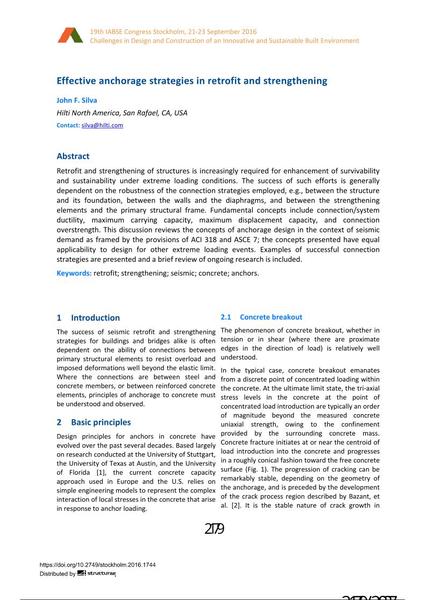Effective anchorage strategies in retrofit and strengthening

|
|
|||||||||||
Bibliografische Angaben
| Autor(en): |
John F. Silva
(Hilti North America, San Rafael, CA, USA)
|
||||
|---|---|---|---|---|---|
| Medium: | Tagungsbeitrag | ||||
| Sprache(n): | Englisch | ||||
| Tagung: | IABSE Congress: Challenges in Design and Construction of an Innovative and Sustainable Built Environment, Stockholm, Sweden, 21-23 September 2016 | ||||
| Veröffentlicht in: | IABSE Congress Stockholm, 2016 | ||||
|
|||||
| Seite(n): | 2179-2187 | ||||
| Anzahl der Seiten (im PDF): | 9 | ||||
| Jahr: | 2016 | ||||
| DOI: | 10.2749/stockholm.2016.1744 | ||||
| Abstrakt: |
Retrofit and strengthening of structures is increasingly required for enhancement of survivability and sustainability under extreme loading conditions. The success of such efforts is generally dependent on the robustness of the connection strategies employed, e.g., between the structure and its foundation, between the walls and the diaphragms, and between the strengthening elements and the primary structural frame. Fundamental concepts include connection/system ductility, maximum carrying capacity, maximum displacement capacity, and connection overstrength. This discussion reviews the concepts of anchorage design in the context of seismic demand as framed by the provisions of ACI 318 and ASCE 7; the concepts presented have equal applicability to design for other extreme loading events. Examples of successful connection strategies are presented and a brief review of ongoing research is included. |
||||
| Stichwörter: |
Beton Verstärkung Anker Retrofit
|
||||
